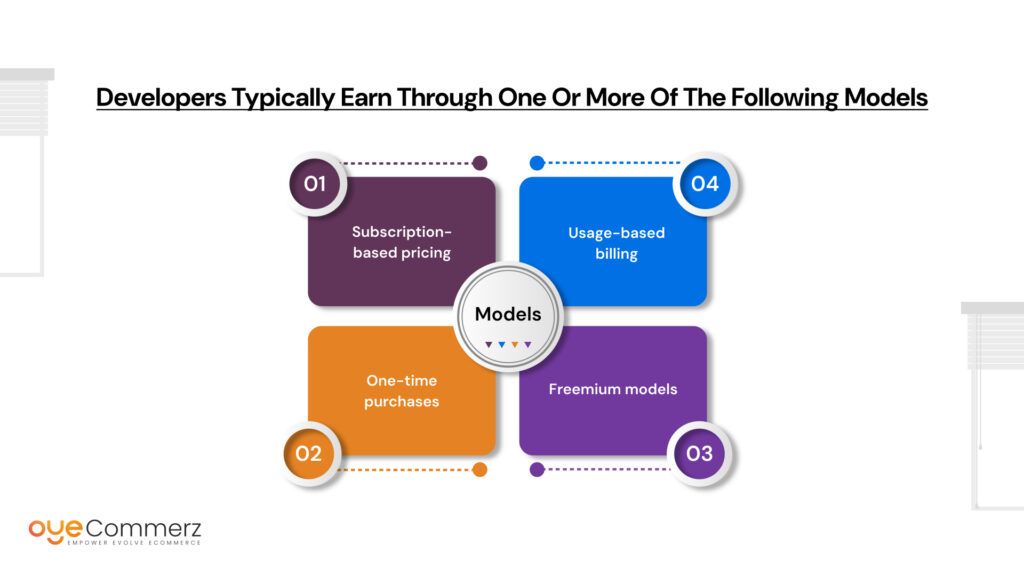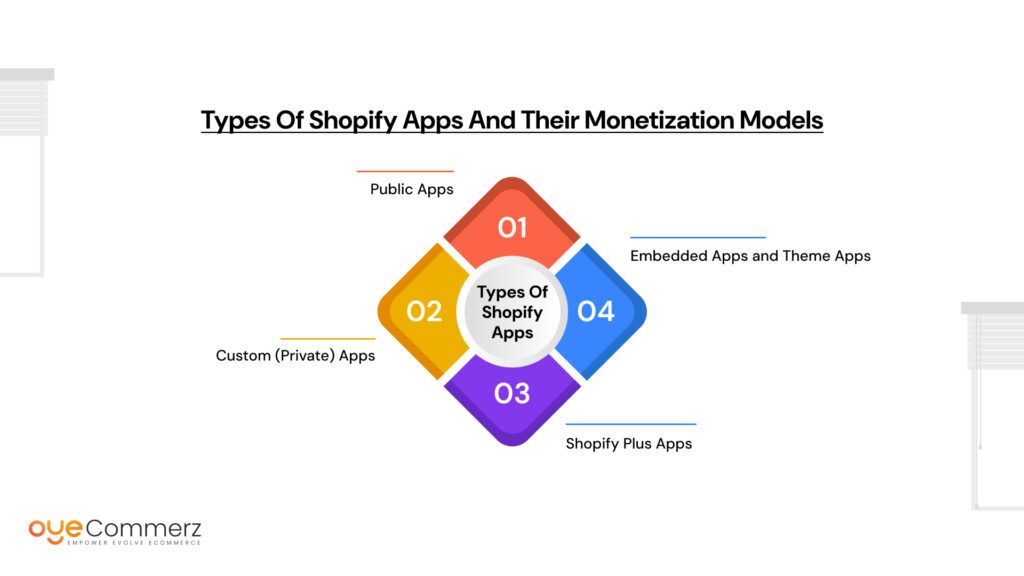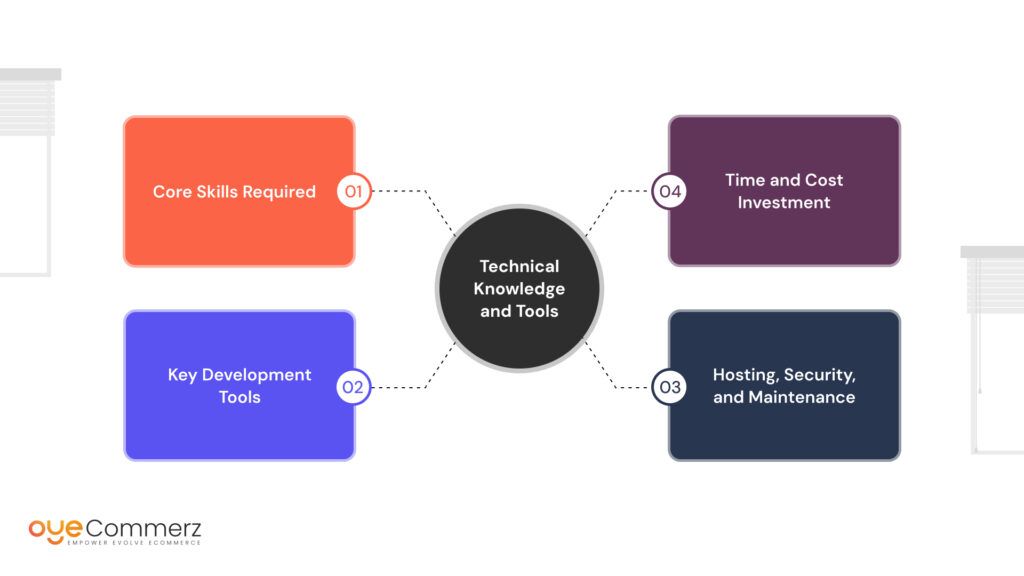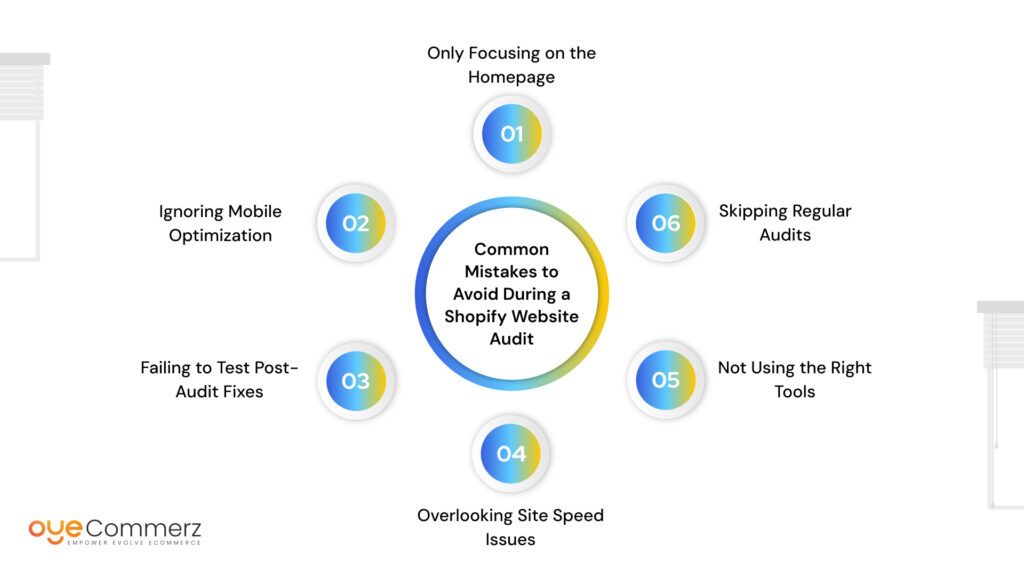Shopify app development is rapidly emerging as one of the most lucrative opportunities in the e-commerce technology space. With over 4.8 million live Shopify stores globally and more than 8,000 apps listed on the Shopify App Store, the demand for tailored solutions continues to grow. Yet many developers and entrepreneurs still ask: Is it actually profitable to build Shopify apps in 2025?
The reality is, breaking into the Shopify ecosystem isn’t as simple as launching an app and watching the installs roll in. Rising competition, evolving store owner expectations, and technical complexities make it harder than ever to stand out.
This guide explores the business potential of Shopify app development—breaking down the costs, opportunities, and strategies involved. Whether you’re a solo developer, a startup founder, or new to e-commerce altogether, you’ll find clear answers on whether investing in Shopify app development is the right move for you.
Table of Contents
ToggleWhat Is Shopify App Development?
Shopify app development refers to the process of creating applications that extend the functionality of Shopify stores. These apps help merchants enhance store performance, streamline operations, and provide a better shopping experience for their customers.
At its core, Shopify is a flexible platform, but it doesn’t cover every unique business need out of the box. That’s where custom apps come in. Developers can build apps to solve specific problems—like automating order tracking, enabling one-click upsells, or integrating third-party services such as CRMs and ERPs.
There are two main types of Shopify apps:
- Public apps, which are listed on the Shopify App Store and can be installed by any merchant.
- Private or custom apps, which are built for a single merchant’s unique requirements and are not listed publicly.
Shopify app development can range from simple tools that modify store themes to complex back-end integrations that handle inventory, shipping, or analytics. Whether you’re a developer looking to enter the Shopify ecosystem or a business owner considering a custom solution, understanding how app development works is the first step to unlocking its potential.
Why Shopify App Development Is in Demand
The growth of e-commerce in the United States has created a thriving environment for Shopify app development. As of 2025, Shopify holds approximately 28% of the U.S. e-commerce platform market share, making it the second-largest platform after Amazon. This dominance has fueled a growing need for apps that help merchants personalize their storefronts, improve operational efficiency, and drive revenue.
In the last few years, the number of Shopify merchants in the U.S. has surged, with thousands of new stores launching every month. At the same time, the demand for advanced app capabilities—such as AI-powered recommendations, B2B solutions, and mobile-first features—has led to a sharp increase in development opportunities.
The Shopify App Store has also become a major revenue channel. Apps like Klaviyo, ReConvert, and PageFly have reported millions in annual revenue, signaling the high profitability potential when a product meets real merchant needs. Importantly, Shopify’s developer-first ecosystem, including open APIs, tools like Shopify CLI, and clear monetization models, lowers the barrier to entry for developers looking to create impactful solutions.
As more U.S. businesses migrate to Shopify from platforms like Magento and WooCommerce, the demand for tailored apps will only increase—making Shopify app development a smart investment for developers and agencies in 2025 and beyond.
Is Shopify App Development Profitable in 2025?

The short answer is yes—Shopify app development can be highly profitable when approached strategically. In 2025, the demand for custom functionality among Shopify merchants continues to grow, driven by the need to stand out in a competitive digital marketplace. But profitability depends on the type of app, the value it delivers, and how it’s monetized.
Developers typically earn through one or more of the following models:
- Subscription-based pricing (recurring monthly or yearly fees)
- One-time purchases
- Freemium models with paid upgrades
- Usage-based billing
According to Shopify’s developer earnings report, top-performing apps can generate six to seven figures annually, especially those offering automation, analytics, or marketing integrations. Even niche tools serving smaller audiences can be profitable with low overhead costs and high retention rates.
The key to success in Shopify app development lies in identifying a real merchant pain point, delivering a simple but effective solution, and supporting it with a user-friendly experience. Public apps offer scale, while private or custom apps can generate steady income through higher-value, long-term merchant relationships.
Types of Shopify Apps and Their Monetization Models

In Shopify app development, understanding the different types of apps—and how they generate income—is essential to choosing the right approach for your business goals. Each app type serves a unique purpose and comes with its own potential for profitability, scalability, and maintenance.
Public Apps
These are listed on the Shopify App Store and available to any merchant. Public apps have the highest revenue potential due to their wide reach. Monetization typically comes through:
- Monthly subscriptions
- Free plans with paid upgrades (freemium)
- Usage-based billing (charging per order, visit, or feature use)
Custom (Private) Apps
Built for a specific merchant, these apps are tailored to unique workflows or integrations. While they don’t scale like public apps, they command higher upfront development fees and offer consistent income from ongoing support or retainers.
Shopify Plus Apps
Some developers focus on creating solutions specifically for Shopify Plus merchants, who often have complex needs and larger budgets. These apps are typically high-ticket and require deep technical customization, but can yield significant returns per client.
Embedded Apps and Theme Apps
These are more technical categories within Shopify app development:
- Embedded apps are tightly integrated into the Shopify admin via App Bridge and Polaris.
- Theme apps extend storefront functionality and must meet Shopify’s performance and security standards.
Monetization Models at a Glance
|
App Type |
Revenue Model |
Scalability |
Ideal For |
|
Public App |
Subscription, Freemium |
High |
Developers, SaaS businesses |
|
Custom App |
One-time or retainer-based |
Low |
Freelancers, agencies, B2B service models |
|
Shopify Plus App |
High-ticket project pricing |
Moderate |
Specialized dev teams |
|
Embedded/Theme App |
Varies (based on use case) |
Varies |
Technical developers with UI/UX focus |
Choosing the right app type in Shopify app development depends on your technical skills, business model, and long-term goals. Whether you’re looking for scale or high-value custom projects, there’s room to build a profitable strategy.
Technical Knowledge and Tools Needed for Shopify App Development

To succeed in Shopify app development, having the right technical foundation is just as important as identifying the right business opportunity. While Shopify provides powerful tools and APIs, developers still need a working knowledge of modern web technologies to build secure, scalable, and efficient apps.
Core Skills Required
- HTML, CSS, and JavaScript: Essential for front-end customization and interaction
- React: Shopify’s Polaris design system is built on React, making it the preferred choice for building embedded apps
- Liquid: Shopify’s templating language used to render dynamic content in themes
- Node.js or Ruby on Rails: Popular back-end frameworks supported by Shopify for app development
- GraphQL and REST APIs: Used to interact with Shopify’s platform and store data
Key Development Tools
- Shopify CLI: Streamlines app development with commands for scaffolding, previewing, and deploying apps
- Polaris: Shopify’s component library for creating intuitive user interfaces that match the Shopify admin experience
- App Bridge: A JavaScript library that enables communication between your app and Shopify’s admin
- Shopify Functions: A new way to customize backend logic like discounts, checkout, and order routing directly within Shopify
Hosting, Security, and Maintenance
Shopify doesn’t host your app—developers must manage their own hosting infrastructure. This includes ensuring:
- HTTPS encryption
- OAuth-based authentication
- GDPR and CCPA compliance
- Ongoing app maintenance and updates with Shopify’s API versioning
Time and Cost Investment
Building a basic public Shopify app can take 4–6 weeks depending on complexity, while a custom Shopify Plus integration could span several months. If you’re hiring a development agency or freelance team, costs may range from $5,000 to $50,000+ depending on scope and functionality.
In summary, Shopify app development requires a mix of front-end and back-end skills, along with an understanding of Shopify’s ecosystem and development tools. Developers who master these elements position themselves to build high-performance apps that solve real merchant problems and drive long-term revenue.
Is Shopify App Development Right for Beginners in E-commerce?
If you’re new to e-commerce, the idea of jumping into Shopify app development might seem intimidating. But the reality is that many successful app developers started with little to no background in building apps or working with Shopify. The platform is designed to be developer-friendly, and its documentation, tools, and community support make it accessible for beginners who are willing to learn.
Shopify app development can be a great entry point into the e-commerce tech space because:
- The market is large and still growing
- There are clear, well-documented APIs and tools available
- Developers can build either small, niche tools or more complex solutions depending on skill level
- You can start with custom apps for a single merchant before scaling to public app development
That said, it’s important to set realistic expectations. Learning the Shopify ecosystem takes time. Beginners will need to understand the basics of web development (HTML, JavaScript, APIs) and gradually learn how Shopify works under the hood—especially if they aim to build apps that offer real value to store owners.
One strategic approach is to collaborate with a merchant or store owner early on. Solving one specific problem for one store is often the best way to begin. This helps you stay focused, gain experience, and start generating revenue without the pressure of scaling immediately.
For entrepreneurs without a technical background, partnering with a freelance developer or Shopify-focused agency can also be a smart way to turn an app idea into reality without learning to code from scratch.
Shopify app development is not just for seasoned professionals—it’s also an opportunity for motivated beginners to carve out a niche in a fast-moving, high-demand space.
Contact to Migrate your Site to Shopify Now
Considering Migration First? Let Oyecommerz Set the Foundation for Shopify App Development

Before investing time and resources into Shopify app development, it’s essential to have a stable and optimized store foundation. If you’re currently using platforms like Magento, WooCommerce, or BigCommerce, migrating to Shopify is often the smartest first step toward building a scalable e-commerce presence.
At Oyecommerz, we help businesses migrate to Shopify with zero data loss, minimal downtime, and complete structural integrity. From product catalogs and customer accounts to order history and SEO URLs, we ensure everything transitions smoothly.
Our migration services are ideal for merchants planning to invest in Shopify app development, because a clean, well-configured Shopify setup is crucial for custom app functionality, theme integration, and backend performance. Whether you’re building your own app or working with a developer, starting with a professionally migrated Shopify store reduces future friction and technical debt.
Why choose Oyecommerz:
- End-to-end migration from Magento and other platforms
- Post-migration support and optimization
- Shopify app readiness and integration consulting
- Tailored migration plans for both small businesses and enterprise stores
If your goal is to leverage the full potential of Shopify app development, let us help you get the foundation right.
Conclusion
Shopify app development in 2025 is more than just a trend—it’s a long-term opportunity for developers, entrepreneurs, and agencies looking to grow in the e-commerce space. With millions of active merchants, increasing demand for custom solutions, and a supportive ecosystem, the potential for building profitable apps is real and growing.
However, success doesn’t come from writing code alone. It comes from identifying specific merchant problems, offering meaningful solutions, and continuously adapting to Shopify’s evolving platform. Whether you’re starting as a solo developer, launching your first SaaS product, or scaling a service-based business, Shopify app development can provide a sustainable and rewarding path.
For those new to e-commerce or transitioning from another platform, starting with a solid Shopify store is key. Partnering with migration experts like Oyecommerz ensures your store is optimized from day one—setting you up for smoother app development and better long-term performance.
In short, Shopify app development is absolutely worth considering if you’re looking to innovate in e-commerce. The demand is strong, the tools are available, and the market is ready.
Frequently Asked Questions
Shopify app development involves creating custom applications that extend the functionality of Shopify stores. These apps help merchants automate tasks, improve customer experience, and integrate third-party tools. By adding tailored features, e-commerce businesses can streamline their operations, enhance sales, and stand out in the competitive marketplace.
Yes, Shopify app development is profitable in 2025. With Shopify’s rapid growth and increasing demand for tailored solutions, developers have significant opportunities to create high-earning apps. Public apps with subscription models, in particular, can generate substantial recurring revenue. However, success depends on providing real value to merchants and choosing the right monetization strategy.
To succeed in Shopify app development, developers need expertise in front-end technologies like HTML, CSS, JavaScript, and React. Additionally, proficiency in back-end frameworks like Node.js, Ruby on Rails, and Shopify’s Liquid templating language is essential. Knowledge of Shopify’s APIs and tools such as Shopify CLI and App Bridge will also be crucial for building effective, scalable apps.
Yes, even beginners in e-commerce can succeed in Shopify app development. Shopify offers a developer-friendly ecosystem with extensive documentation, tutorials, and support. By starting with small, simple apps or collaborating with experienced developers, newcomers can gradually build their skills and eventually create impactful solutions for Shopify merchants.
Before diving into Shopify app development, ensure your Shopify store is properly set up. For businesses migrating from platforms like Magento, consider using a professional migration service like Oyecommerz. A solid, optimized store foundation is essential for seamless app integration and ensuring high performance for your custom app solutions.




